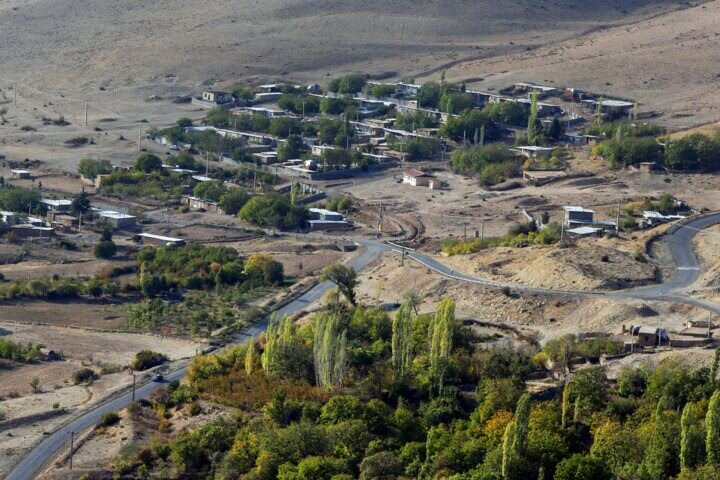Interior Ministry issues permit for 580 new village administration offices

TEHRAN – A total of 581 new village administration offices will be established across the country as per permission issued by Interior Ministry.
Accordingly, all villages with more than 20 households and run by Islamic councils are allowed to set up village administration offices, IRIB quoted Mahyar Noorali, an official with Municipalities and Village Administration Organization as saying.
In this regard, 118 village administration offices will be established in Ardabil province, 165 in Lorestan, 142 in Mazandaran, 119 in Kerman, and 37 in Hamedan.
Established in 2003, the Municipalities and Village Administration Organization has implemented numerous development projects across the country's rural areas.
The organization has been set up with the aim of improving the environmental situation of villages, recognizing the deficiencies and social, economic, health, cultural, and educational needs, preparing practical plans in the mentioned fields, and presenting them to the relevant officials for necessary action, as well as encouraging the villagers not to migrate to the cities.
Village administrators are elected by the members of the Council of the village, who are elected by the people and are tasked with local management.
Currently, some 40,000 village administration offices are active in villages with over 30 households.
Village administration offices so far
Since the incumbent government took office two years ago, 951 new village administrations have so far been established across the country.
In fact, 38,816 village administrations are currently offering services to some 96 percent of people in rural areas.
Currently, 26 percent of the country's population lives in villages, around 39,000 villages have more than 20 households and 23,000 villages have less than 20 households.
In Iran, where villages account for 20-23 percent of the value-added income in the country, the development of rural areas has always been a top agenda of the government’s activities.
The development of rural areas has always been a top agenda of the government’s activities.
Many efforts have been made over the past couple of years by the government to support villagers and slow down the trend of migration from rural areas to cities.
Rural tourism, agritourism, religious tourism, and ecotourism are alternatives or complementary economic activities that could further stimulate rural development while decreasing rural community dependency on one main economic sector (agriculture, forestry, energy, or mining).
Rural councils and village administrations play an effective role in reducing the costs of implementing development and service projects by attracting the participation of people and benefactors.
Village administrations coordinate executive bodies and follow up on affairs related to rural areas, facilitating the implementation of development projects.
Over the past two years, 11,384 projects costing 7.65 trillion rials (about $15 million) have been carried out by village administrations.
There are around 40,000 villages in the country with more than 20 households, for all of which comprehensive development plans have been approved for 10 years.
In addition to improving infrastructures in rural areas, the establishment of village administrations is an achievement for the government as it has been a positive measure toward boosting public participation in running national affairs.
Rural development
Villagers and nomads play a vital role in the political, economic, and social developments of Iran. So, October 7 was declared in 2013 as the National Day of Village and Nomads.
Despite their low population, they have a great contribution to all-out national development.
Although oil, industry, and service sectors hold a significant share of the national economy, the rural and nomadic economy is considered an inexhaustible source for the nation, compared to exhaustible natural resources.
Living far from pollution and current problems of cities and being less dependent on oil resources, they play a critical role in sustainable development.
Villagers and nomads take the lead in providing food, food security, and healthy food production.
They have a major role in the tourism and handicraft industry and they are sources of many cultures and traditions in the country playing an important role in ensuring the country's security, especially in borders and remote areas.
Some 25 percent of the country's population lives in villages, producing around 70 percent of food for the domestic market.
Currently, more than 90 percent of agricultural and food products are produced in villages. Some 25 percent of the country's meat products and 35 percent of handicrafts, as well as a major part of organic dairy products, including vegetable oil, milk, curd, and other materials, are produced by nomads.
In fact, the economy of the rural areas is not limited to agriculture; it includes various industries such as handicrafts, creative industries, clothing, processing industries, food, medicinal plants, carpentry, furniture, tourism, ecotourism, fisheries, carpets and rugs, and dried fruits.
The Majlis (the Iranian Parliament) approved a total of 31 trillion rials (nearly $35 million) for rural development in the budget bill for the Iranian calendar year 1401 (March 2022-March 2023), IRIB reported.
By allocating this amount of budget, the whole credit of comprehensive development plans will reach 42 trillion rials, Akbar Nikzad, head of the Housing Foundation, said in June 2022.
The comprehensive development plans aim to develop rural areas in line with cultural, economic, and social conditions, as well as housing provision for the rural residents and improving environmental service.
MT/MG
Leave a Comment